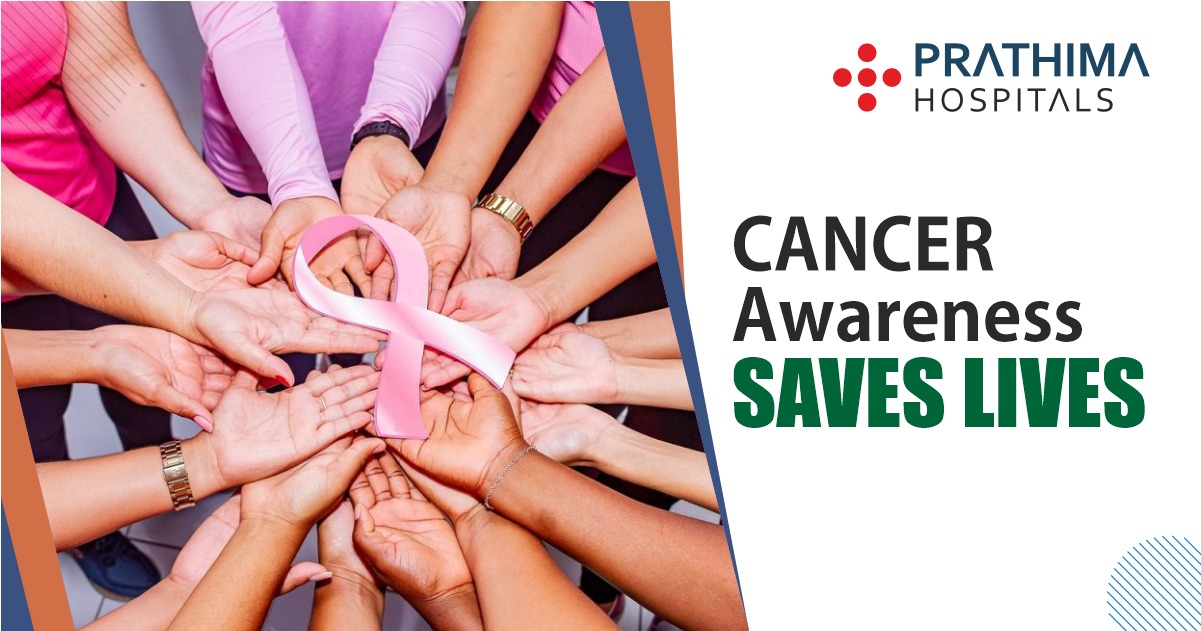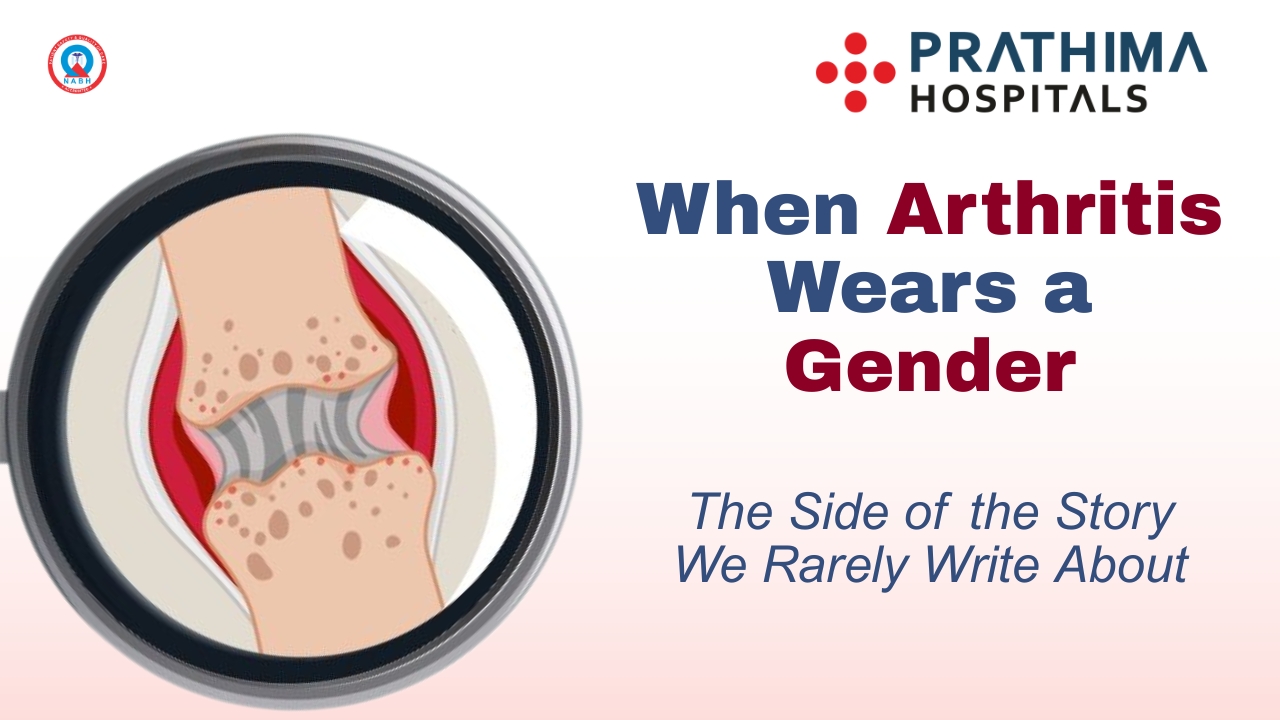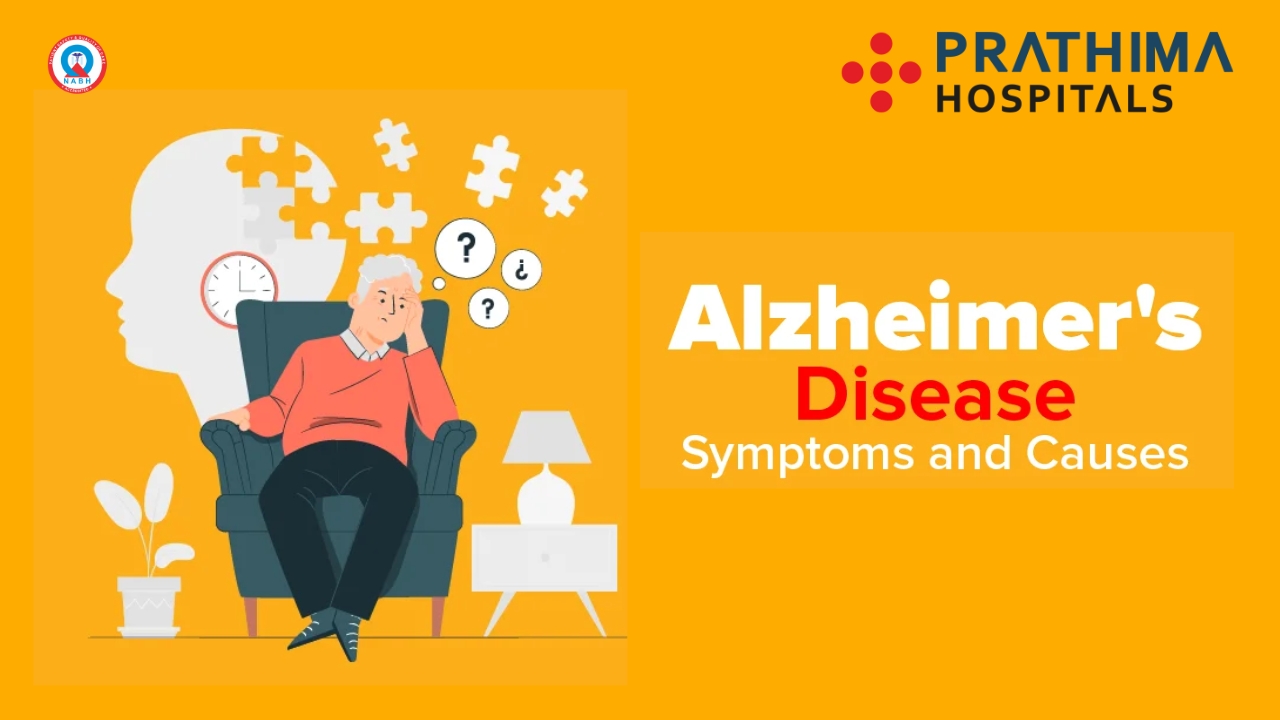Understanding Cancer: Types, Symptoms, and Treatment Options!

World Cancer Awareness Day 2023
Globally, cancer poses a powerful threat to millions of people. It’s a complex disease with a range of different types, each requiring a unique approach to treatment. Education about cancer, its various forms, symptoms, and treatment options is critical for early detection and improved outcomes. As we observe National Cancer Awareness Day on November 7th each year, we will explore the realm of cancer, providing valuable information about prevalent cancer types, their associated symptoms, and the available treatment options.
According to the Best Cancer Hospital in Warangal, cancer, often referred to as the “Emperor of All Maladies,” is a group of diseases characterized by the uncontrolled growth and spread of abnormal cells in the body. The term “cancer” encompasses numerous distinct diseases, all with their unique characteristics and challenges. Understanding these differences is key to improving diagnosis and treatment.
Common Types of Cancer
Breast Cancer
Symptoms: Breast lumps, changes in breast size or shape, nipple discharge, and skin changes on the breast, such as redness or dimpling.
Treatment: Treatment for breast cancer often includes surgery, chemotherapy, radiation therapy, hormone therapy, and targeted therapy.
Lung Cancer
Symptoms: Chronic cough, chest pain, coughing up blood, wheezing, shortness of breath, and recurrent respiratory infections.
Treatment: Treatment options for lung cancer include surgery, radiation therapy, chemotherapy, targeted therapy, and immunotherapy.
Prostate Cancer
Symptoms: Frequent urination, difficulty starting and stopping urination, weak urine flow, blood in the urine, and erectile dysfunction.
Treatment: Treatment for prostate cancer may include active surveillance, surgery, radiation therapy, hormone therapy, chemotherapy, or immunotherapy.
Colon Cancer
Symptoms: Changes in bowel habits, blood in the stool, abdominal pain, unexplained weight loss, and fatigue.
Treatment: Treatment typically involves surgery to remove the tumour, chemotherapy, radiation therapy, targeted therapy, and immunotherapy.
Skin Cancer
Symptoms: As per the Best Oncologist in Warangal, skin changes, such as the appearance of new moles, changes in the shape or colour of existing moles, or non-healing sores.
Treatment: Treatment for skin cancer can include surgery to remove the tumour, radiation therapy, chemotherapy, and immunotherapy.
Ovarian Cancer
Symptoms: Bloating, pelvic or abdominal pain, difficulty eating or feeling full quickly, and changes in urinary habits.
Treatment: Ovarian cancer is treated with surgery, chemotherapy, and targeted therapy.
Symptoms and Early Detection
Early detection of cancer is often the key to successful treatment and improved outcomes. Recognizing the common symptoms associated with cancer and seeking prompt medical attention can be a lifesaver. However, it’s important to note that not all cancers present obvious symptoms in their early stages. Regular screening tests are essential for early detection in cases where symptoms may not be evident. Let’s delve into the symptoms and early detection of cancer in more detail:
Symptoms of Cancer:
The symptoms of cancer can vary widely, with the type and stage playing a key role. Here are some common signs suggested by the Best Oncology Hospital in Warangal that may indicate the presence of cancer:
- Unexplained Weight Loss: A sudden and unexplained weight loss, especially if it is significant, can be a sign of various types of cancer.
- Fatigue: Persistent and unexplained fatigue can be a symptom of different cancers, often related to the body’s immune response.
- Pain: Persistent pain in a specific area, such as the abdomen or chest, can be indicative of cancer. It may be caused by the tumour pressing on nerves or organs.
- Skin Changes: Changes in the skin, such as the appearance of new moles or changes in the size, shape, or colour of existing moles, can be an early sign of skin cancer.
- Cough or Hoarseness: A persistent cough or hoarseness that lasts for more than a few weeks may indicate lung or throat cancer.
- Changes in Bowel or Bladder Habits: Persistent changes in bowel habits, such as diarrhoea, constipation, or blood in the stool, could be symptoms of colorectal cancer. Changes in urination patterns may be related to prostate or bladder cancer.
- Unexplained Bleeding: Unexplained bleeding, such as blood in the stool, urine, or vaginal bleeding after menopause, can be a sign of various types of cancer.
- Difficulty Swallowing: Persistent difficulty swallowing may be a symptom of oesophagal or throat cancer.
- Lumps or Masses: The presence of palpable lumps or masses in the breast, testicles, or other areas of the body can be indicative of cancer. Breast lumps may suggest breast cancer, while testicular lumps may suggest testicular cancer.
- Changes in Skin Texture: Changes in the texture of the skin, such as redness, scaliness, or non-healing sores, can be signs of skin cancer.
- Respiratory Symptoms: Symptoms such as chronic cough, chest pain, wheezing, or shortness of breath may indicate lung cancer.
- Abdominal Pain and Bloating: Persistent abdominal pain, bloating, and discomfort can be early signs of ovarian or colorectal cancer.
It’s important to note that many of these symptoms can be related to various medical conditions other than cancer. However, if any of these symptoms persist or are particularly concerning, it’s crucial to consult the Best Oncologist in Warangal for a thorough evaluation.
Early Detection of Cancer:
Successful treatment of cancer can be greatly improved by early detection. The methods for early detection may include:
- Cancer Screenings: Many cancers can be detected through regular screenings. Pap smears, colonoscopies, & mammograms for breast cancer are common screening tests.
- Self-exams: Self-examination can be a useful tool for detecting certain cancers. For example, regular breast self-exams can help women identify breast lumps, and testicular self-exams can help men detect abnormalities.
- Genetic Testing: In cases where there is a strong family history of certain types of cancer, genetic testing may be recommended to assess an individual’s risk.
- Diagnostic Tests: If a healthcare provider suspects cancer based on symptoms or screening results, they may order diagnostic tests such as biopsies, imaging scans (e.g., X-rays, CT scans, MRIs), or blood tests to confirm the diagnosis.
Early detection is particularly crucial for cancer types that may not present noticeable symptoms in their early stages, such as ovarian cancer. Therefore, routine screenings and regular check-ups with a healthcare provider are essential, especially for individuals with a family history of cancer or other risk factors.
Diagnosis and Staging
Diagnosing cancer involves a series of tests, including imaging scans, blood tests, and biopsies. Once diagnosed, cancer is staged to determine the extent of its spread. Therapy plans are based on the stage of the disease.
Treatment Options
Best Cancer Treatment in Warangal, is highly individualized, depending on the type and stage of cancer, as well as the patient’s overall health. Here are the primary treatment modalities:
- Surgery: Surgical removal of the tumour is a common treatment for many types of cancer. In many cases, it is the first step in treatment.
- Radiation Therapy: This healing uses high-energy beams to mark and destroy cancer cells. This can be utilized independently or alongside other therapeutic approaches.
- Chemotherapy: To combat cancer, chemotherapy employs drugs to kill cancer cells or impede their growth. It can be administered orally or through intravenous infusion.
- Hormone Therapy: Some cancers are hormone-dependent. Hormone therapy involves blocking or suppressing the hormones that fuel the cancer’s growth.
- Targeted Therapy: The goal of targeted therapy is to target specific molecules in cancer cell growth. They are often used in meetings with other procedures.
- Immunotherapy: Immunotherapy control the body’s immune strategy to combat cancer. Various types of cancer have shown remarkable success with it.
- Stem Cell Transplant: This treatment involves high-dose chemotherapy followed by the infusion of healthy stem cells to replace damaged bone marrow.
Survivorship and Support
Cancer survivorship begins at the time of diagnosis and continues throughout the rest of life. Support during and after treatment is crucial for physical and emotional well-being. Many cancer centres offer survivorship programs that focus on wellness and quality of life.
Cancer Prevention
While not all cancers can be prevented, certain lifestyle choices and behaviours can reduce the risk:
- Tobacco Avoidance: Avoid or quit smoking and avoid secondhand smoke exposure.
- Healthy Diet: Consume a diet rich in fruits and vegetables while limiting processed foods and red meat.
- Physical Activity: Immerse in ordinary physical activity to maintain a beneficial weight.
- Limit Alcohol: Reduce your alcohol intake drastically to maintain your health.
- Sun Protection: Protect your skin from the sun’s harmful rays by using sunscreen and wearing protective clothing.
- Vaccination: Get vaccinated against viruses that can cause cancer, such as HPV (human papillomavirus).
Conclusion
Cancer is a formidable adversary, but with advances in research and treatment, there is hope. Awareness, early detection, and proactive health choices are our most potent weapons in the battle against this complex disease. By educating ourselves and others about different types of cancer, their symptoms, and treatment options, we empower ourselves to take control of our health and make informed decisions regarding prevention and treatment. Best Cancer Hospital in Warangal educates the journey to a cancer-free world begins with knowledge and compassion.
.
.
.
.
.
For More Details:
📞:: 733 733 6600 | 040 4345 4345
🌐:: https://prathimahospitals.com/






Warning: Undefined variable $req in /home/u885608126/domains/prathimahospitals.com/public_html/wp-content/themes/prathimahospitals/functions.php on line 294
Warning: Undefined variable $commenter in /home/u885608126/domains/prathimahospitals.com/public_html/wp-content/themes/prathimahospitals/functions.php on line 295
Warning: Trying to access array offset on value of type null in /home/u885608126/domains/prathimahospitals.com/public_html/wp-content/themes/prathimahospitals/functions.php on line 295
Warning: Undefined variable $aria_req in /home/u885608126/domains/prathimahospitals.com/public_html/wp-content/themes/prathimahospitals/functions.php on line 295
Warning: Undefined variable $req in /home/u885608126/domains/prathimahospitals.com/public_html/wp-content/themes/prathimahospitals/functions.php on line 298
Warning: Undefined variable $commenter in /home/u885608126/domains/prathimahospitals.com/public_html/wp-content/themes/prathimahospitals/functions.php on line 299
Warning: Trying to access array offset on value of type null in /home/u885608126/domains/prathimahospitals.com/public_html/wp-content/themes/prathimahospitals/functions.php on line 299
Warning: Undefined variable $aria_req in /home/u885608126/domains/prathimahospitals.com/public_html/wp-content/themes/prathimahospitals/functions.php on line 300
Warning: Undefined variable $commenter in /home/u885608126/domains/prathimahospitals.com/public_html/wp-content/themes/prathimahospitals/functions.php on line 303
Warning: Trying to access array offset on value of type null in /home/u885608126/domains/prathimahospitals.com/public_html/wp-content/themes/prathimahospitals/functions.php on line 303